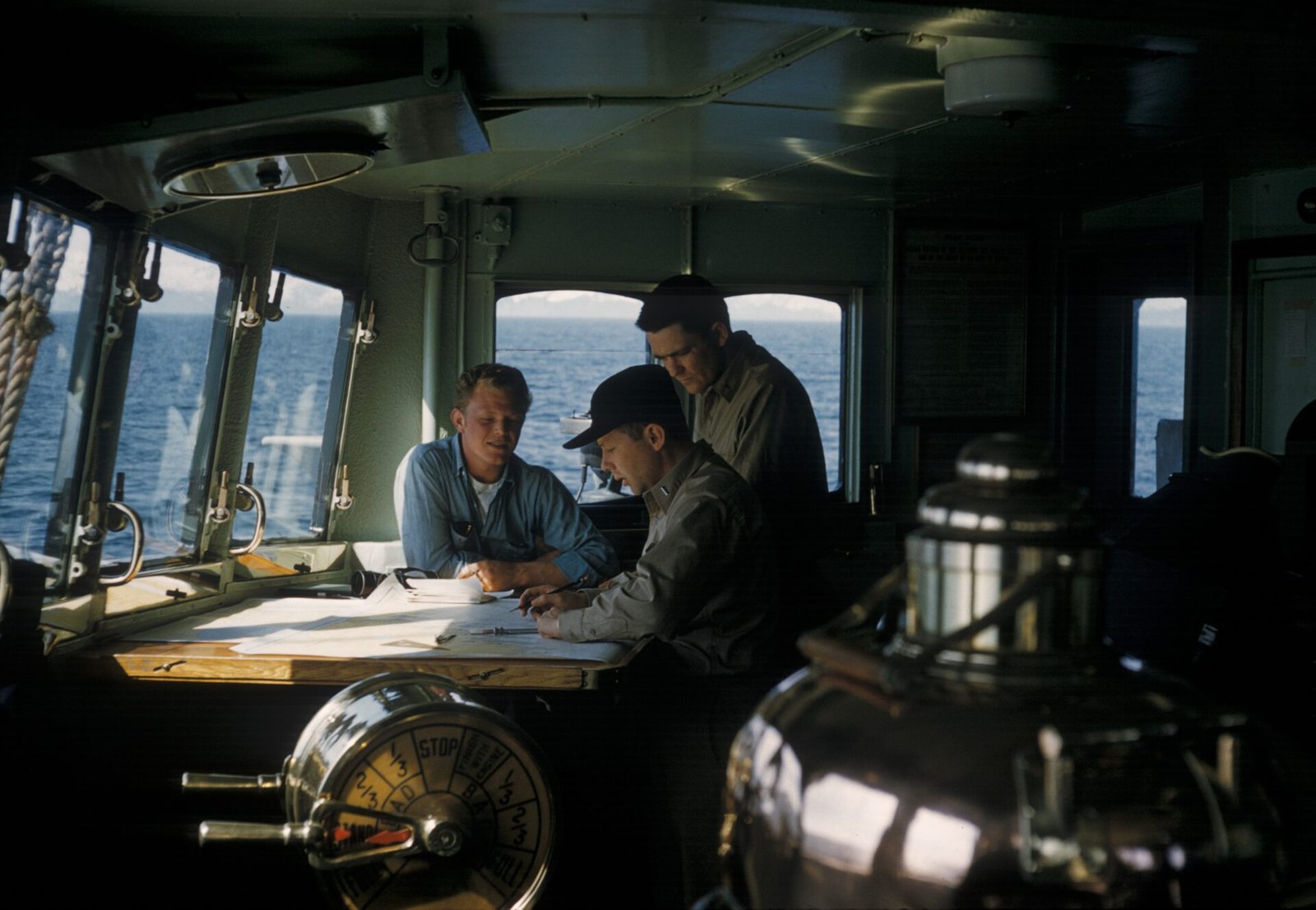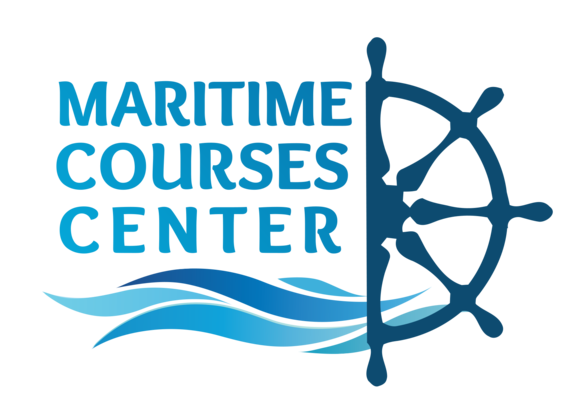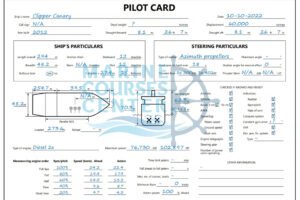
Navigating the High Seas: A Comprehensive Guide to Marine Navigation Instruments and Equipment and tools | marine navigational instruments
Table of Contents to Marine Navigation Instruments and Equipment and tools | marine navigational instruments
which electronic navigation instrument provides real-time information about nearby vessels, landmasses, and obstacles using radio waves?

Navigating the High Seas: A Comprehensive Guide to Marine Navigation Instruments and Equipment and tools | marine navigational instruments
Understanding Marine Navigation Instruments and Equipment and tools
When it comes to navigating the vast and unpredictable oceans, having the right instruments and equipment is essential. Marine navigation instruments are designed to help sailors and boaters determine their position, plot a course, and safely navigate through even the most challenging conditions.
One crucial instrument is the GPS, or Global Positioning System. GPS uses a network of satellites to provide accurate location information, allowing sailors to pinpoint their position on a digital chart. Another important instrument is the compass, which helps determine direction and is invaluable when other electronic devices fail.
Essential Marine Navigation Instruments and Equipment and tools
In addition to instruments, certain equipment is essential for safe and efficient marine navigation. One such piece of equipment is the marine radar. Radar uses radio waves to detect other vessels, land masses, and even weather systems, helping sailors avoid collisions and navigate through fog or darkness.
Another crucial piece of equipment is the marine chartplotter. A chartplotter combines GPS technology with electronic charts, allowing sailors to plot their course and track their progress in real-time. It provides invaluable information such as depth, tides, and even points of interest along the way.
Choosing the Right Marine Navigation Instruments and Equipment and tools
With so many options available, choosing the right marine navigation instruments and equipment can be overwhelming. However, considering factors such as the type of vessel, intended use, and budget can help narrow down the choices.
It is also important to consider future needs and potential upgrades. Investing in instruments and equipment that can be easily upgraded or integrated with other systems can save both time and money in the long run.
1. Automatic Radar Plotting Aid (ARPA)

The Automatic Radar Plotting Aid (ARPA) is a system that employs radar contacts to create tracks. It calculates course, speed, and closest point of approach (CPA) for tracked objects, aiding collision avoidance. ARPA automates radar information processing, enhancing accuracy and enabling tracking of multiple targets.
2. Automatic Tracking Aid (ATA)

Similar to ARPA, the Automatic Tracking Aid (ATA) generates tracks using radar contacts. It presents tracked object information in numerical or graphical form, facilitating collision-free route planning and enabling manual acquisition and automatic tracking of multiple targets.
3. Speed and Distance Log Device

This equipment measures a ship’s speed and distance traveled from a specific reference point. It assists in estimating arrival times at destinations, aiding port authorities. It also adjusts estimated time of arrival (ETA) in response to potential dock traffic issues.
4. Pilot Card

A pilot card offers vital ship information to pilots, including dimensions, draught maneuvering, propulsion, and turning characteristics. It ensures safe ship maneuvering by providing essential data to pilots during port approaches.
5. Echo Sounder

Echo sounders use sound wave transmission to measure water depth below a ship. By analyzing return pulse intervals and speed of sound in water, they determine water depth accurately.
6. Electronic Chart Display and Information System (ECDIS)

ECDIS is a digital geographic information system used for nautical navigation. It simplifies location pinpointing and directions, replacing traditional nautical charts.
7. Automatic Identification System (AIS)

AIS automatically tracks ship locations and statistics, displaying data on screens or ECDIS. It enables ship-to-ship communication via VHF radio channels.
8. Long-Range Tracking and Identification System (LRTIS)
LRTIS ensures thorough global ship tracking. Ships report positions to flag administrations at least four times daily, typically via satellite communication.
9. Voyage Plan
A voyage plan outlines a ship’s entire journey, including departure, harbor, and route details. It’s crucial for safe navigation and minimizing human error.
10. Rudder Angle Indicator
This device displays a ship’s rudder blade position, aiding steering control and maneuvering.
11. Voyage Data Recorder (VDR)
VDR records ship operational events and includes voice recording. It’s invaluable for incident investigation.
12. Rate of Turn Indicator (ROTI)
ROTI indicates a ship’s turning rate, aiding steady steering and course adjustments.
13. Forecastle Bell
Used as a fog or emergency warning signal during bad weather, the forecastle bell is a precautionary device.
14. Maneuvering Booklet
A record of ship propulsion plans during maneuvers, aiding pilots in varying weather conditions.
15. Black Ball Shape
A signaling shape indicating a vessel at anchor, the black ball shape aids communication during daytime.
16. Record of Navigational Activities
A log book recording ship events during voyages, maintaining crucial voyage data.
17. Record of Maintenance of Navigational Equipment
A documented record of navigational equipment maintenance, accessible for reference.
18. Wheelhouse Posters
Displaying ship maneuvering characteristics, wheelhouse posters assist bridge operations.
19. Transmitting Heading Device
Aids display of a ship’s true heading.
20. Black Diamond Shape
A daytime signal indicating a ship being towed, facilitating communication with nearby vessels.
21. Ship Flags
Colored and marked flags indicating a ship’s position and status.
22. Gyro Compass
A compass unaffected by external magnetic fields, offering accurate geographic direction.
23. Radar
Uses microwave signals to detect distances between ships and other objects, assisting collision avoidance.
24. Magnetic Compass
Traditional compass indicating north via the earth’s magnetic field.
25. Auto Pilot
Automated system maintaining a ship’s course without manual intervention.
26. GPS Receiver
Global Positioning System device displaying ship location and providing directions using satellites.
27. Sound Reception System
Allows officers to hear external sound signals, especially foghorns.
28. Navigation Lights
Illumination indicating ship position and status, essential for safe navigation.
29. Ship Whistle
Mandatory signaling device producing audible warnings.
30. Daylight Signalling Lamp
Used for daylight emergency signaling and spotlight functions.
31. Chart Table
Surface for accommodating nautical charts.
32. Parallel Rulers
Instruments for drawing parallel lines on charts for plotting directions.
33. Logbook
Records position, distance run, and other data during voyages.
34. Marine Binoculars
Enhance vision with a standard size of 7 x 50, providing magnification and clarity.
35. Depth Sounder
Indicates depth via sound wave reflection.
These navigation instruments, tools, and equipment underscore the meticulous planning and technological advancements driving safe and successful maritime voyages.
36. Sextant
A sextant is a traditional celestial navigation tool used to measure the angle between two visible objects. By measuring the angle between a celestial body (like the sun or stars) and the horizon, navigators can determine their position accurately.
37. Chronometer
A chronometer is a highly accurate timekeeping instrument used to calculate longitude while at sea. It provides a consistent time reference necessary for celestial navigation calculations.
38. Anemometer
Anemometers measure wind speed, providing crucial data for adjusting course and predicting weather conditions.
39. Barometer
A barometer measures atmospheric pressure, helping sailors anticipate weather changes and identify potential storm patterns.
40. Sextant
The radar beacon transponder (RACON) emits radar signals, creating distinctive patterns on radar screens, aiding in navigation, especially in poor visibility.
41. Windlass
Windlasses are mechanical devices used for raising and lowering ship anchors. They play a pivotal role in anchoring operations.
42. Gyro Stabilizers
Gyro stabilizers minimize a ship’s rolling motion, enhancing onboard comfort and reducing the risk of seasickness.
43. Magnetic Variation Compass
This compass corrects the compass reading to account for the difference between magnetic north and true north, known as magnetic variation or declination.
44. Night Vision Equipment
Night vision devices enable navigation in low-light conditions, enhancing safety during nighttime voyages.
45. Marine Radar Reflectors
Radar reflectors increase a ship’s visibility on radar screens, particularly for smaller vessels.
46. EPIRB (Emergency Position Indicating Radio Beacon)
EPIRBs are distress beacons that transmit location data to satellites and rescue services in case of emergencies, aiding rapid response.
47. SART (Search and Rescue Transponder)
SARTs are devices that assist search and rescue operations by transmitting signals detectable by radar systems, aiding in locating distressed vessels.
48. Navigational Software
Modern ships often utilize sophisticated navigation software that integrates various data sources, aiding in route planning, collision avoidance, and real-time position tracking.
49. Vessel Traffic Management System (VTMS)
VTMS combines radar, AIS data, and other sources to monitor vessel traffic, enhancing navigational safety in busy waterways.
50. Water Tight Doors
Water-tight doors ensure that compartments can be sealed off to prevent flooding in case of accidents or emergencies.
51. Emergency Escape Breathing Devices (EEBD)
EEBDs provide crew members with a supply of breathable air for escaping confined or smoke-filled spaces in emergencies.
52. Chart Plotters
Chart plotters display digital charts, allowing for real-time tracking of a ship’s position and course.
53. Electronic Navigational Charts (ENCs)
ENCs provide detailed digital chart data for use in ECDIS systems, enhancing accuracy and navigation efficiency.
54. Satellite Communication Systems
Satellite communication systems enable real-time communication with shore facilities and other vessels, even in remote locations.
55. AIS Base Stations
AIS base stations receive AIS signals and transmit vessel information to shore stations and other vessels, contributing to maritime traffic management.
56. Gyroscopic Navigation System
Gyroscopic navigation systems provide stable and accurate heading information even in rough sea conditions.
57. Tide Tables
Tide tables provide information about tidal patterns, assisting in safe navigation during varying water levels.
58. Weather Routing Services
Weather routing services utilize meteorological data to suggest optimal routes for vessels, enhancing fuel efficiency and avoiding adverse weather.
59. Emergency Steering System
Emergency steering systems allow manual control of a ship’s rudder in case of main steering system failure.
60. Magnetic Compass Adjusters
Magnetic compass adjusters ensure the accuracy of magnetic compasses by compensating for deviations caused by the ship’s structure and equipment.
61. Portable Pilot Units (PPUs)
PPUs are portable devices used by marine pilots to assist in navigation during ship approaches and port operations.
62. Depth Contour Plotters
Depth contour plotters provide a visual representation of water depths, aiding navigation in shallow or complex areas.
63. Marine GPS Navigation Apps
Marine GPS navigation apps offer navigational features on smartphones and tablets, providing additional tools for mariners.
64. Bridge Resource Management (BRM) Tools
BRM tools promote effective communication and decision-making among bridge team members, enhancing overall navigation safety.
65. AIS Target Display
AIS target displays present real-time information about nearby vessels, enabling navigators to make informed decisions.
66. Underwater Hull Inspection Systems
These systems include remotely operated vehicles (ROVs) or divers that inspect the ship’s underwater hull for damage or marine growth.
67. VDR Data Analysis Software
VDR data analysis software helps interpret recorded data from Voyage Data Recorders, aiding incident analysis and safety improvements.
68. Buoyage System
Buoyage systems comprise navigational aids like buoys and beacons, guiding ships along safe routes and indicating navigational hazards.
69. Engine Room Monitoring Systems
Engine room monitoring systems track various parameters of the ship’s propulsion and power systems, ensuring efficient operation.
70. Fire Detection and Suppression Systems
These systems detect and suppress fires onboard, safeguarding both crew and vessel.
71. Marine Radios
Marine radios provide communication capabilities for ship-to-ship and ship-to-shore communication, vital for coordination and safety.
72. AIS Display Units
AIS display units provide real-time visual representation of AIS data, helping navigators identify and track nearby vessels.
73. Portable Navigation Lights
Portable navigation lights are used as temporary or emergency lighting to signal vessel position and status during certain operations.
74. Echo Sounder Recorder
Echo sounder recorders capture and log depth sounder data over time, allowing for later analysis and assessment of underwater conditions.
75. Depth Alarm System
Depth alarm systems alert navigators when the water depth reaches a predetermined threshold, helping prevent grounding in shallow waters.
76. Marine Sextant Lamp
Sextant lamps provide illumination for taking celestial observations at night, supporting celestial navigation during darkness.
77. Shipboard Cameras
Shipboard cameras offer visual monitoring of critical areas, enhancing situational awareness and aiding in navigation and security.
78. Radar Performance Analyzer
Radar performance analyzers assess the accuracy and effectiveness of a ship’s radar system, ensuring reliable navigation data.
79. Helmsman’s Chair
A helmsman’s chair provides a comfortable and secure seat for the helmsman to operate the ship’s steering system.
80. Emergency Position-Indicating Radio Beacon (EPIRB)
Similar to an EPIRB, an EPIRB is a smaller version designed for personal use, carried by crew members for individual safety.
81. Electronic Bearing Line
Electronic bearing lines on radar displays help navigators plot and maintain safe distances from obstacles or other vessels.
82. Rate-of-Turn Indicator
Rate-of-turn indicators provide real-time information on the ship’s rate of rotation, aiding precise maneuvering and navigation.
83. Chart Correction Tools
Chart correction tools, including correction pens and adhesive corrections, are used to update and maintain paper nautical charts.
84. Ship Maneuvering Simulator
Ship maneuvering simulators provide a training environment for practicing ship handling, navigation, and emergency maneuvers.
85. Global Maritime Distress and Safety System (GMDSS)
GMDSS is an international system used for maritime communication and distress signaling, ensuring rapid response in emergencies.
86. Portable Sound-Powered Telephones
Sound-powered telephones offer communication capabilities during power failures or emergencies, relying on sound vibrations.
87. Ship Horn and Whistle Controller
A ship horn and whistle controller allows the crew to operate the ship’s signaling devices, communicating specific sound signals.
88. Wind Vane
A wind vane indicates the direction of the wind relative to the ship’s heading, aiding in navigation and sail adjustments.
89. Bearing Compass
Bearing compasses provide accurate readings of the bearing to a specific object or location, aiding in visual navigation.
90. Radar Reflective Tape
Radar reflective tape enhances a ship’s visibility on radar screens by reflecting radar signals, improving safety in low-visibility conditions.
91. Navigational Plotting Tools
Navigational plotting tools, including dividers, parallel rulers, and protractors, assist in manual plotting of positions on paper charts.
92. Bridge Alarm System
Bridge alarm systems notify the bridge team of various alerts, including navigational hazards, equipment malfunctions, or deviations.
93. Navigational Safety Signs
Navigational safety signs provide visual cues and warnings for navigational hazards, ensuring safe passage through critical areas.
94. Marine Gyrocompass Repeater
Gyrocompass repeaters display the heading information from the main gyrocompass at various locations on the ship’s bridge.
95. ECDIS Backup System
Electronic Chart Display and Information System (ECDIS) backup systems provide redundancy in case of primary system failure.
96. Water Level Sensor
Water level sensors monitor and transmit data about the ship’s waterline and ballast levels for stability and operational purposes.
97. Water Current Indicator
Water current indicators measure the direction and speed of water currents, aiding in route planning and maneuvering.
98. Anti-Piracy Barriers
Anti-piracy barriers, such as barbed wires or electrified fences, deter unauthorized access to ships during piracy-prone areas.
99. Storm Tracking Software
Storm tracking software analyzes weather data to predict and track storms, helping mariners avoid dangerous weather conditions.
100. Navigational Compass Binoculars
Navigational compass binoculars incorporate a built-in compass for quick and convenient direction reference while observing.
From traditional tools like compasses and sextants to cutting-edge technologies like AIS and ECDIS, the array of navigation instruments, tools, and equipment available to modern mariners showcases the relentless pursuit of safer and more efficient maritime navigation. These tools, guided by skilled navigators and officers, ensure that ships can traverse the world’s oceans with accuracy, precision, and utmost safety.
if you want to find ship position join marine traffic website
FAQ
What role do marine navigation instruments and equipment play in maritime navigation?
Marine navigation instruments and equipment are crucial for determining ship positions, plotting courses, and ensuring safe navigation through various conditions, enhancing overall maritime safety and efficiency.
Can you provide examples of essential marine navigation instruments?
Essential marine navigation instruments include GPS (Global Positioning System), compass, marine radar, marine chartplotter, and depth sounder.
How does a GPS contribute to maritime navigation?
A GPS uses a network of satellites to provide accurate location information, helping sailors pinpoint their position on digital charts.
What is the purpose of a compass in marine navigation?
A compass helps determine direction, acting as a reliable reference point for navigation, especially when electronic devices fail.
What is the role of a marine radar in navigation?
Marine radar uses radio waves to detect other vessels, land masses, and weather systems, aiding collision avoidance and navigation in challenging conditions.
How does a marine chartplotter enhance navigation?
A marine chartplotter combines GPS and electronic charts to allow sailors to plot their course, track progress, and access valuable information such as depth and tides in real-time.
How can mariners choose the right navigation instruments and equipment?
Factors like vessel type, intended use, budget, and compatibility with existing systems help mariners select the most suitable navigation instruments and equipmen
What is the purpose of navigational software in modern maritime navigation?
Navigational software integrates various data sources to aid in route planning, collision avoidance, and real-time position tracking, enhancing navigation accuracy.
How does AIS (Automatic Identification System) contribute to maritime safety?
AIS automatically tracks ship locations and statistics, displaying real-time data on screens or ECDIS, improving situational awareness and collision avoidance.
What is the importance of regular maintenance for marine navigation instruments and equipment?
Regular maintenance ensures the functionality and accuracy of navigation instruments and equipment, reducing the risk of malfunction during critical navigation situations.
Tag:GPS, marine navigation, marine radar



